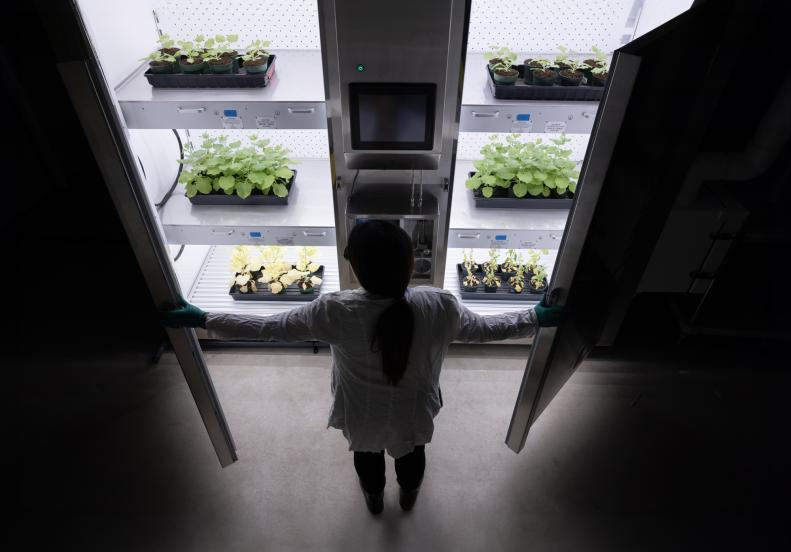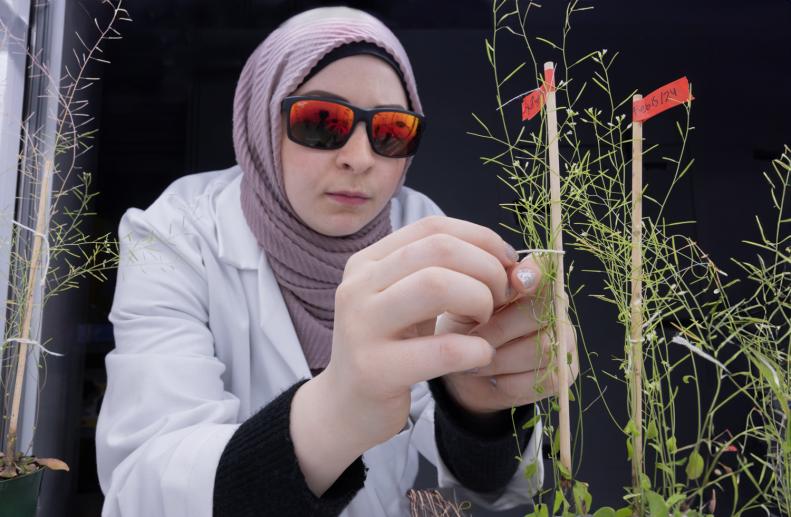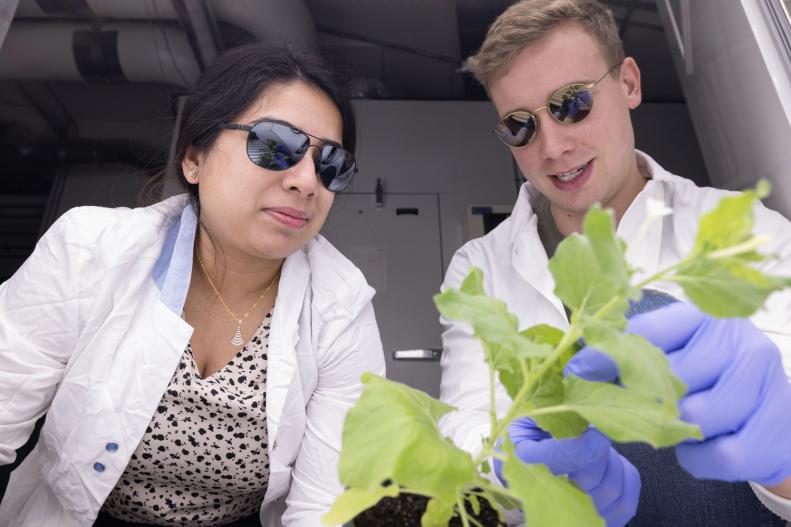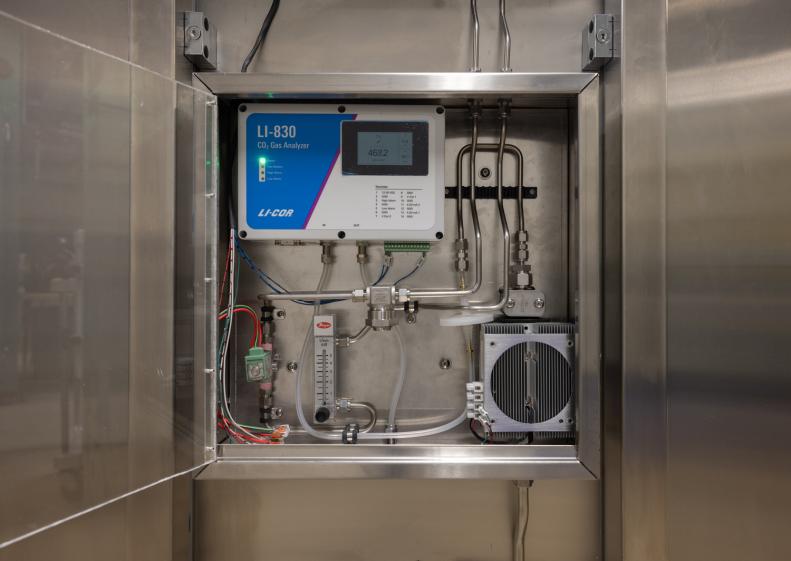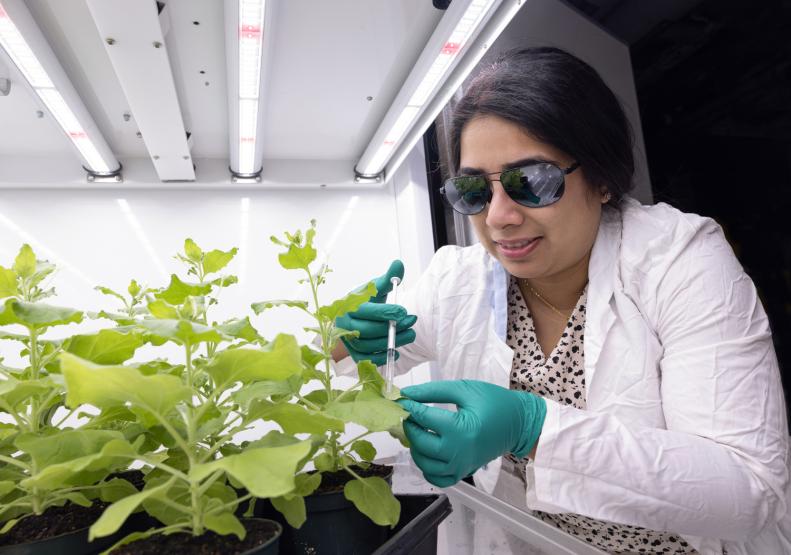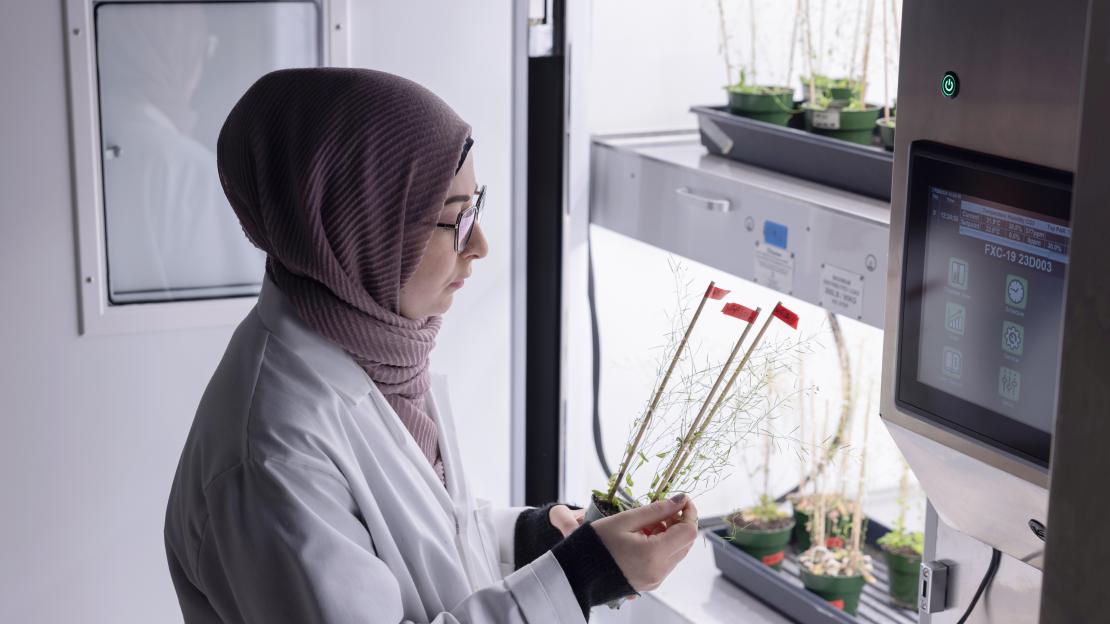Four new chambers used to grow plants will allow biologists at U of T Scarborough to do research that may one day lead to stronger, more resilient food crops.
Located in the Plant Growth Facility, a basement lab in the Science Research Building, the chambers are equipped to mimic different types of growing conditions.
While they look a lot like the industrial walk-in fridges you see in restaurants, there’s nothing frigid about what’s inside. Researchers can control the amount of heat and humidity, light intensity, as well as the speed and direction of wind inside the chambers. They even have an astronomical clock that can recreate the average amount of sunlight received during different times of year in any part of the world.
Here, Jenan Noureddine, a PhD candidate in the Department of Biological Sciences, checks on the state of her Arabidopsis plants. These small flowering plants are related to cabbage and mustard and are among the most widely studied by plant biologists due to their status as a model organism (like the plant equivalent of a lab rat).
There are 21 growth chambers in the facility used for a range of plant experiments, including identifying genes that are important for disease resistance and proteins that help regulate growth and development.
“The ultimate goal is to translate our research into improved crop varieties that can support local agriculture,” says Adam Mott, an assistant professor in the Department of Biological Sciences who manages the facility.
Mott says an important feature of the new chambers is the ability to control carbon dioxide levels, which will allow scientists in the facility to develop experiments to study climate change.
Researchers water the plants while they are inside the chambers and can test the effects of a variety of different stresses on plants including infections, drought and heat, among others.
The LED lights in the newer chambers can get so intense that UV protective eyewear is recommended as a safety precaution.
The new growth chambers received funding courtesy of a grant from the Office of the Vice-Principal Research and Innovation at U of T Scarborough.
